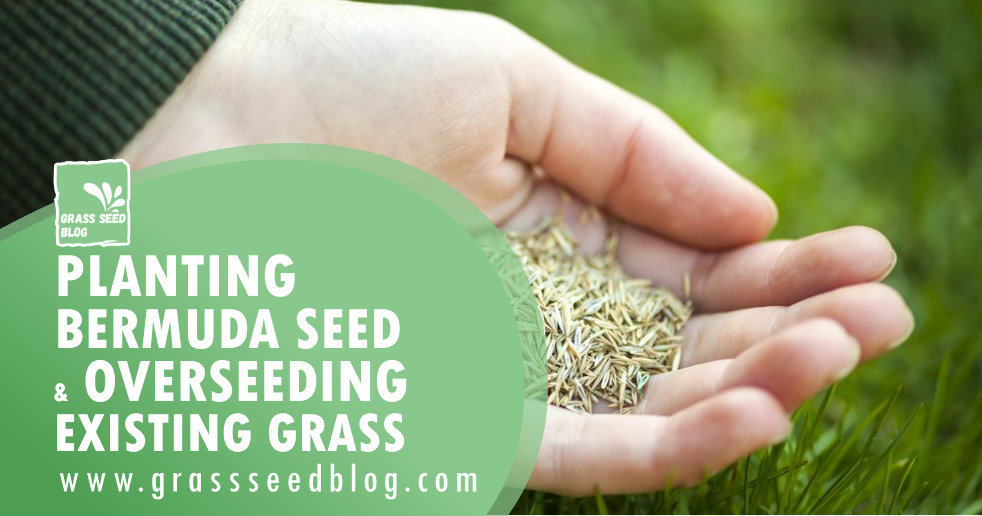As a warm season turf grass, when planting Bermuda seed, care needs to be taken not to cover the seed with excessive soil– no greater than 1/4 inch of dirt covering the seed is suggested. However, the seeds need to have proper soil coverage (ideally 1/8 inch) for good germination to occur. Reliable growing methods include broadcasting by hand, utilizing seed spreaders, as well as hydro-seeding– Rake or drag planted locations to provide dirt coverage over seeds. If you are planning to overseed, aerate before seeding. Do not use weed killers when planting seeds 10-14 weeks before, during or after the growing date.
Planting Bermuda Seed Pasture
Planting Bermuda seed pasture is best done when soil temperature levels are continually over 65 ° F (18 ° C)– this dirt temperature level is reached when daytime air temperature levels are 80 ° or greater. The optimum soil temperature for germination and root growth of Bermuda turf is 75 ° to 80 ° F (24 ° to 27 ° C) – Higher temps are acceptable provided dampness is maintained. This pasture seed produces one of the most frequently utilized field grass for animals grazing and hay production throughout the southern and central U.S.A.
When to spread Bermuda Seed?
When to spread Bermuda seed for a successful Bermuda seed germination? It is best planted in springtime to late spring or very early summer season; this is usually in April or March in warmer areas. Seeding can be done with common Bermuda grass. It germinates at high temperatures as soon as the dirt gets to about 65-70 degrees or 80 ° during the daytime. Seeded at the rate of 5-10 lb. each acre for the hulled seed as well as at 10-15 pound. per acre for the un-hulled. Planting can be done April 15 via May the 30th. Some seeders can transmit, seed as well as pack at once, conserving time and also maintaining the soil from losing excessive wetness. Improved layered seeds are typically planted at 10 lbs. acre prices.
Bermuda Seed Germination
A successful Bermuda seed germination will occur in a soil with a pH in between 6 and also 7. The turf grows finest when the dirt temperature level is between 75 and 95 degrees F and also the air temperature is in between 75 and 95 F. You could anticipate a full grass cover in 4 to six weeks. Soil pH measures the acidity or alkalinity of soil in a range of 1 to 14. Dirt listed below 7 is acidic. Dirt above 7 is alkaline. You could get dirt examination kits at most garden centers. Under the right conditions, the seeds will positively begin germinating in 5 to 14 days, but take 14 to 28 days to sprout completely.
Best Time to Overseed Bermuda Grass
The best time to overseed Bermuda grass is mid to late October and also early November. However, much more accurately will be after the first frost. Annual ryegrass is the fastest germinating variety and probably the most inexpensive. It looks remarkably similar to annual ryegrass with dark green different colors and also shiny leaves. Annual ryegrass expands rapidly as well as needs regular mowing (around 2 to 2.5-inch height) specifically during late fall and early springtime. Their water utilization rates are modest, and also fertilizer requirements are small – maybe one to 2 pounds of nitrogen over the cold months. For a dense stand of rye lawn, overseed at a rate of about 10-12 pounds of seed per thousand (33 feet by 33 feet) square feet. And also maintain the yard irrigated for many weeks to ensure germination.
Overseeding is defined as seeding an existing lawn, typically with a temporary cool-season turfgrass (i.e. annual or seasonal ryegrass), to provide green active grass growth during dormancy of the warm season turfgrass (i.e. bermudagrass). It is utilized thoroughly on sporting activities areas and golf courses, and to some extent, on industrial sites and house lawns. Sports field managers and also golf course superintendents overseed their turfgrasses mostly to balance out the excessive traffic throughout winter months’ play as well as to have a green, quality lawn.
But there are unfavorable impacts to overseeding. Competitions between the cold as well as warm weather grasses can be high, particularly in the early spring when the warm season lawn is attempting to re-grow after winter months dormancy-often described as ‘spring change’. If the spring is cold and also damp it will favor the determination of the overseeded grass at the expenditure of the re-growth of the warm period turf.
Improved turf-type annual ryegrasses have a better springtime transition compared to the overseeded perennial ryegrasses. In years that prefer continued persistence of the overseeding, there can be significant damage to the Bermuda grass. Another big adverse with overseeding is if the existing turfgrass should be “scalped down” to provide a seedbed to prefer a fast fall transition to the overseeding turfgrass. This scalping, together with the fall competitors from the cool season grass stops the warm weather turfgrass from having the ability to keep the necessary carbs in the autumn months. It indicates that the turfgrass is entering into winter season inactivity in a weak condition, with less saved reserves to recoup well the following springtime. If you have lots of traffic throughout the winter period on your site, then overseeding might be appropriate.

